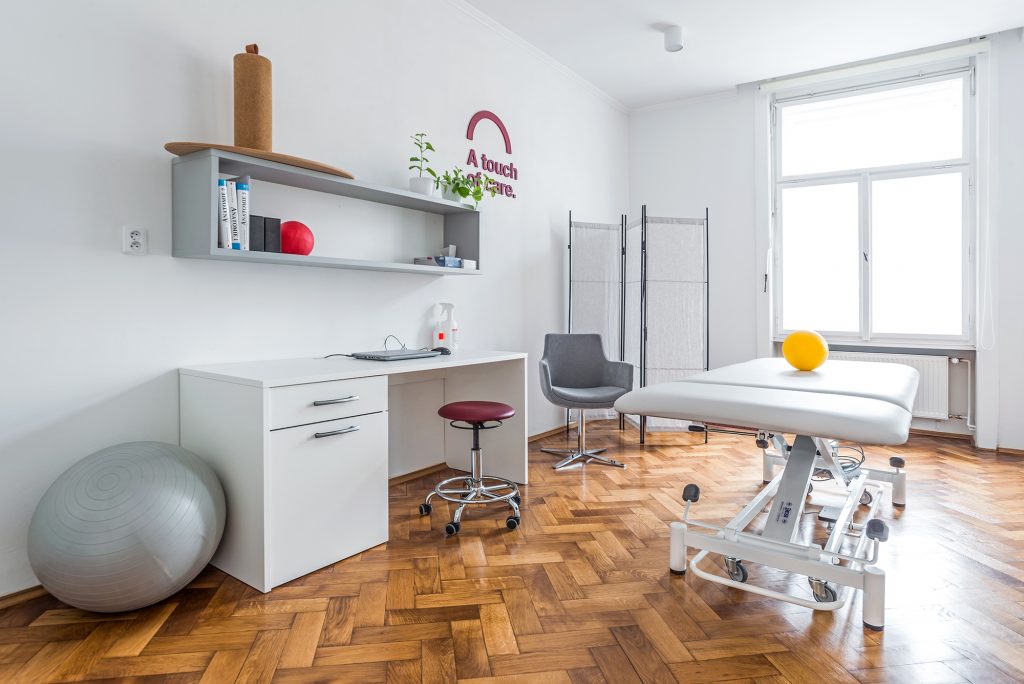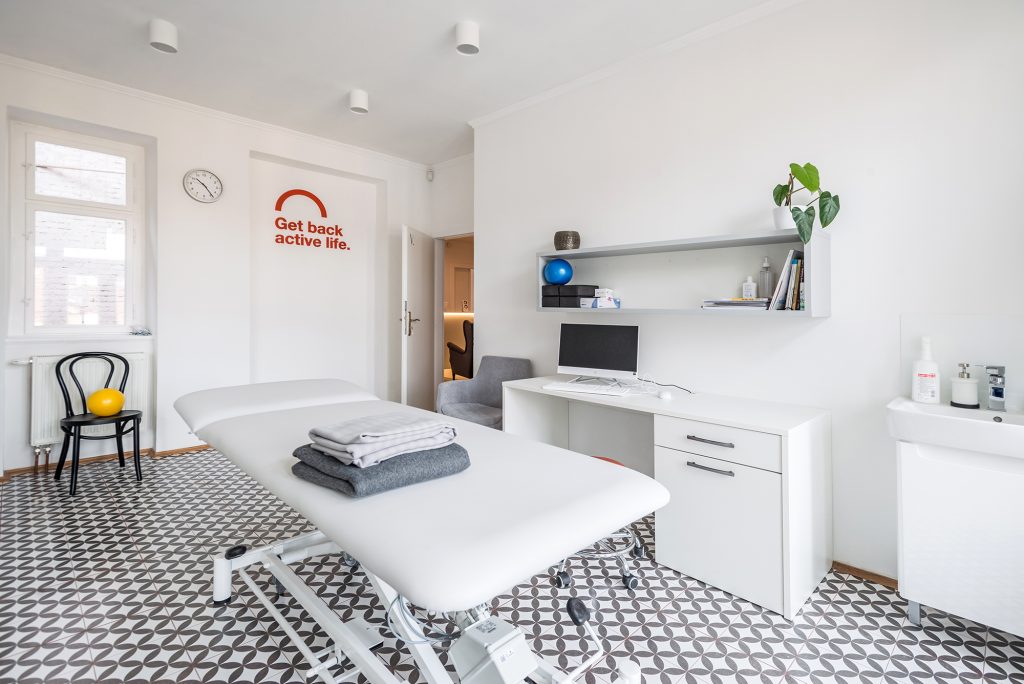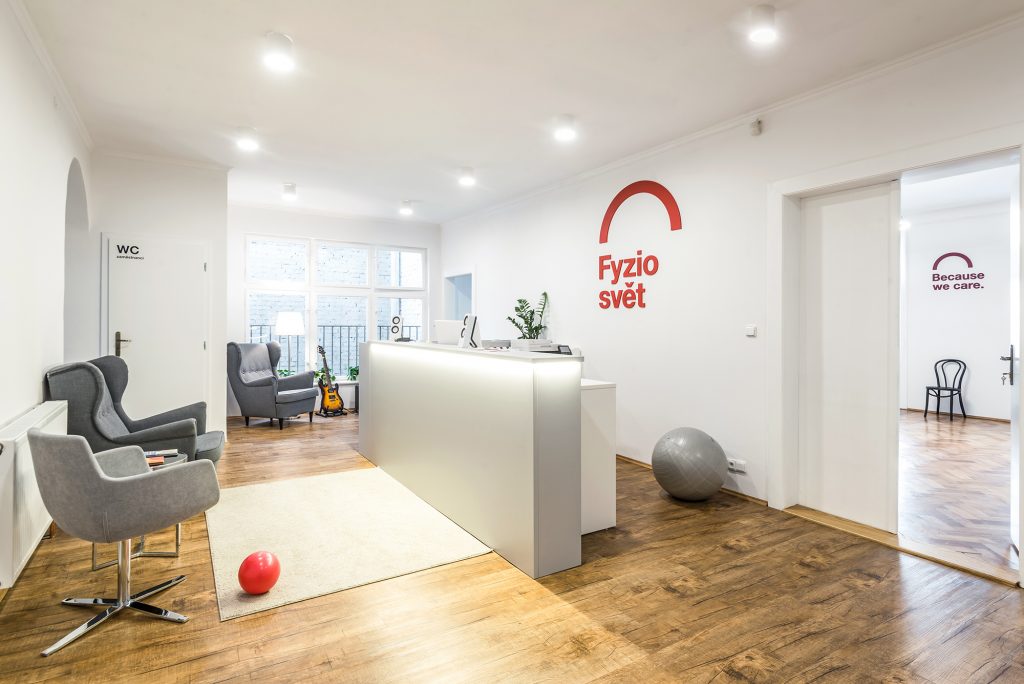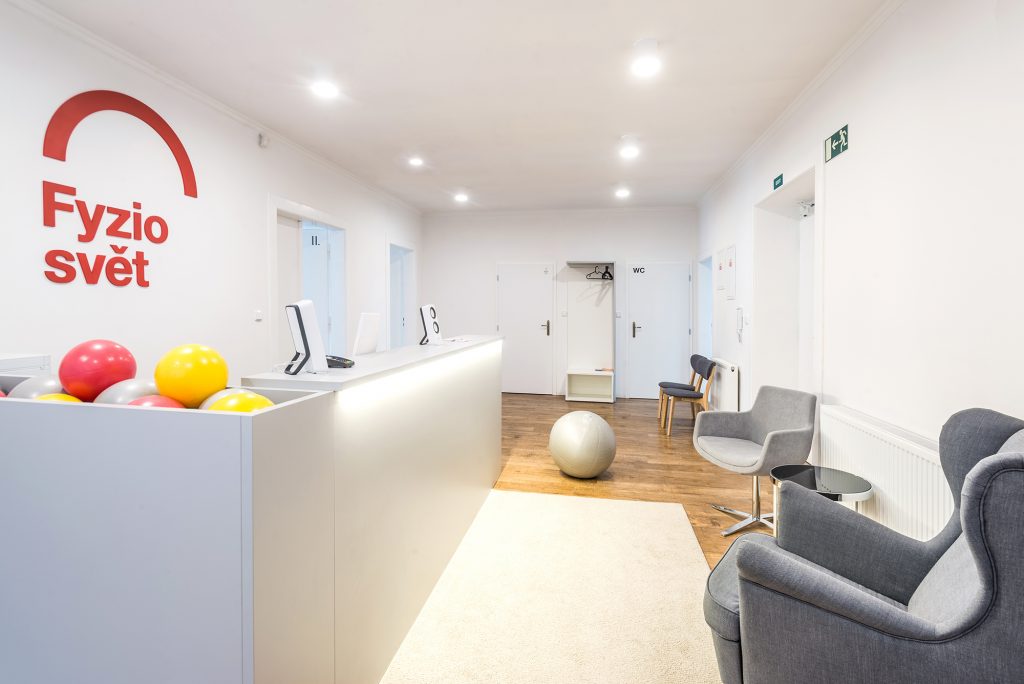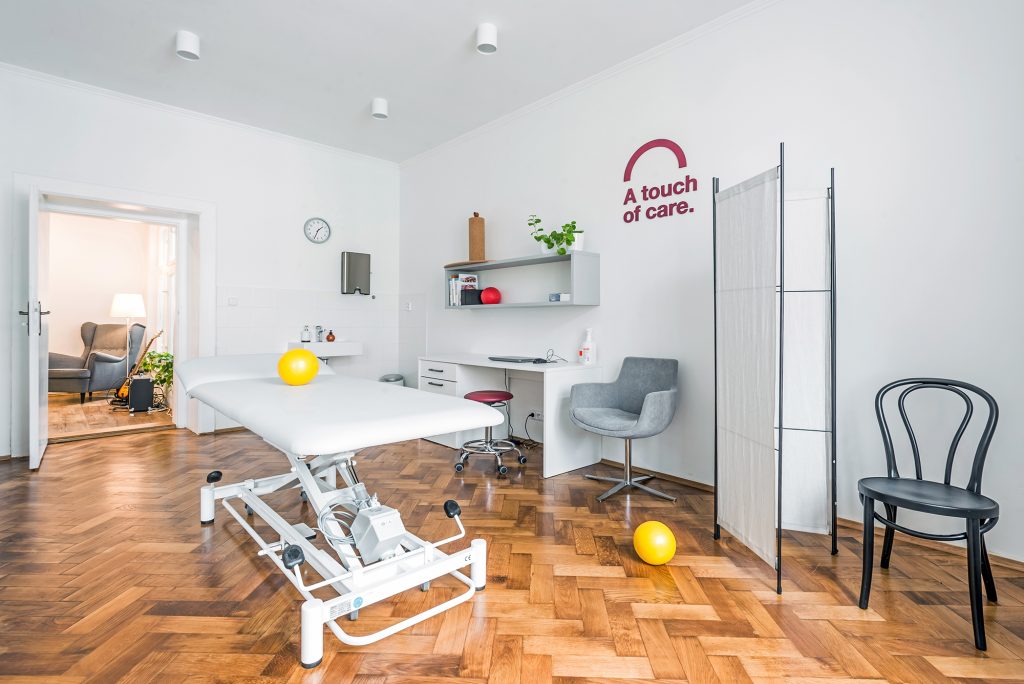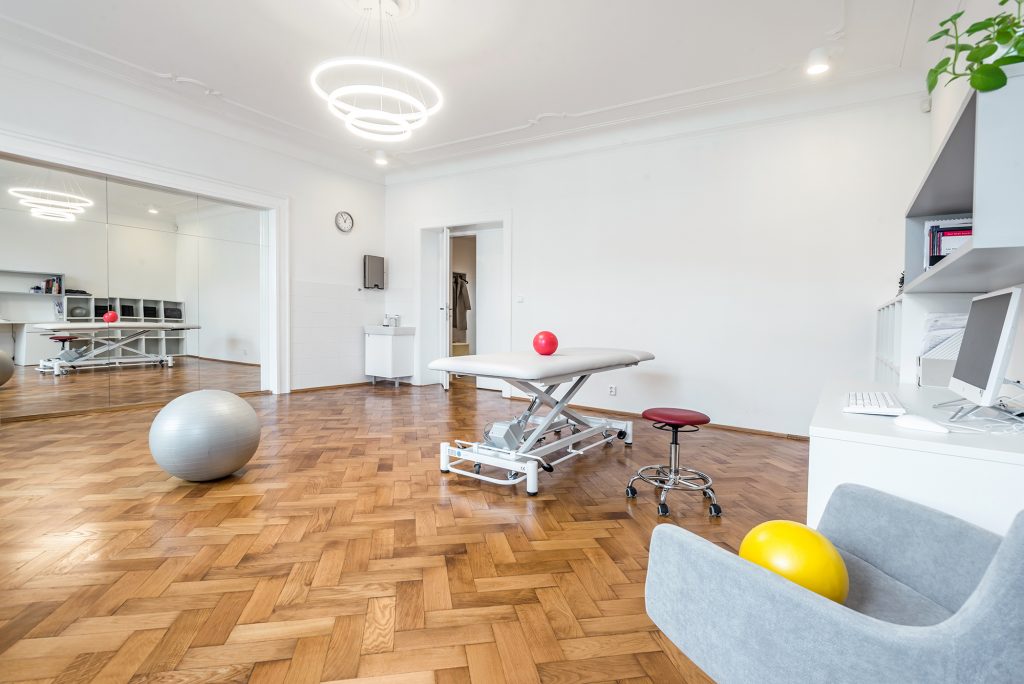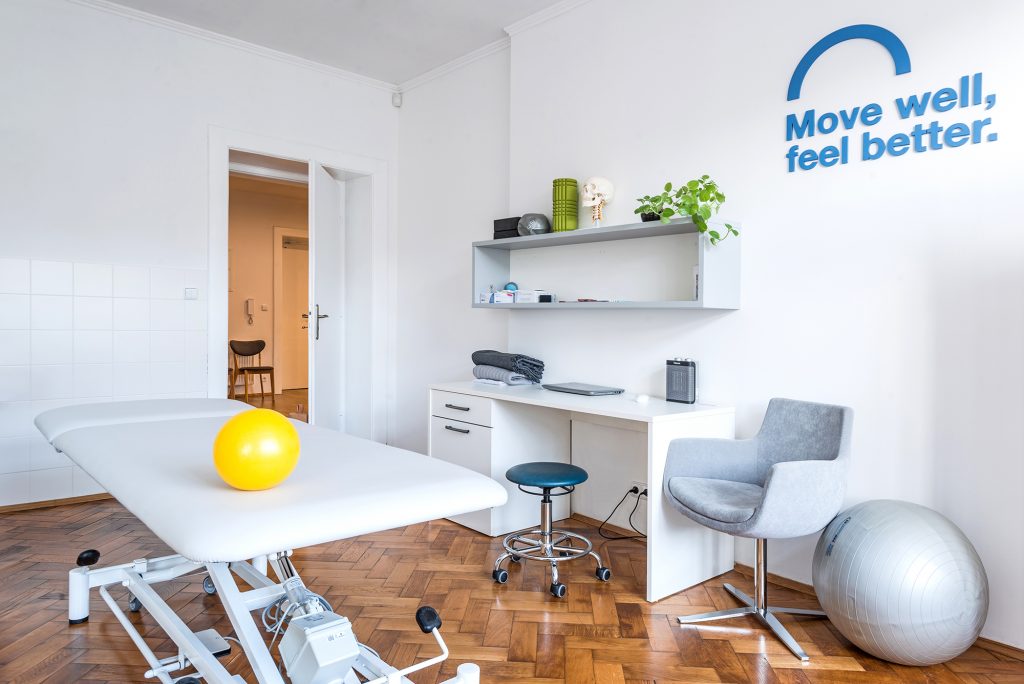7 most common causes of lower back pain
Lower back pain affects most of us at some point in life. Surveys indicate that nearly 80% of adults experience it. The pain can vary in intensity and nature, ranging from a dull ache to sharp sensations that affect mobility and quality of life. Below, you will find seven possible reasons why this happens.
1) Herniated Disc Problems
A disc is essentially a cushion located between the vertebrae that make up the spine. Sometimes, part of its core can push through a tear in the outer layer, leading to a herniation. A hernia, or protrusion, can occur in any part of the spine, but it most commonly affects the lower back.
Herniation as a result of long-term strain
One possible cause of disc herniation is gradual wear and tear associated with aging. As we age, the discs become less flexible and are more prone to tearing or rupturing, even with minimal strain or twisting. Sometimes, poor movement patterns can lead to herniation. For example, overusing back muscles instead of leg and thigh muscles, failure to engage the core, or improper breathing involving the diaphragm and pelvic floor. On rare occasions, trauma such as a fall or a blow to the back can be the cause.
Pain can radiate to the leg
Many people with herniated discs may not experience any symptoms and might not even be aware they have one until it shows up on a spinal image. However, those who do have symptoms might experience not only lower back pain but also pain in the buttocks, thighs, calves, or feet. It is usually a one-sided issue that worsens with coughing, sneezing, or certain extreme positions. The pain is often described as sharp or burning. Other symptoms may include numbness or tingling in the leg, depending on the affected nerve. Weakness is also common, as muscles innervated by the affected nerves tend to weaken, leading to frequent tripping, altered sensations in the foot, and reduced stability.
In very rare cases, a herniated disc can compress the entire spinal canal, including all the nerve roots, which requires emergency surgery to prevent permanent weakness or paralysis.
Seek immediate medical attention if you experience:
- Worsening symptoms such as pain, numbness, or weakness that intensify to the point of impairing daily activities.
- Bladder or bowel dysfunction, such as incontinence or difficulty urinating despite a full bladder.
- Gradual loss of sensation on the inner thighs, back of the legs, or around the rectum.
How to treat herniated discs
In the vast majority of cases, surgery is not necessary, and conservative treatment (physiotherapy, medications, exercise) is preferred. An effective rehabilitation plan must be tailored to the client’s condition and capabilities. In the acute phase, manual treatment of trigger points, tight muscles, and adhesions in the fascia often provides good results. Gentle mobilizations, high-intensity laser therapy, and functional taping with kinesio tape may also be introduced. We can also create a personalized exercise program to help relieve pain, stabilize the spine, and allow you to return to your hobbies. At Fyzio svět, relieving pain is our priority.
2) Acute Back Lock (Lumbago)
Have you ever bent over to pick something up, lifted something heavy, worked in the garden bent over for a long time, or neglected proper form during exercise, only to feel a sharp pain in your back? You may have caused a back lock, also known as lumbago. A typical scenario we see in our clinics is a client in a rigid posture, often slightly bent forward, with sharp pain in the lower back or sacral area. This pain sometimes subsides during walking, but returns after a period of inactivity.
Overloaded muscles lock the spine
The cause is often increased muscle tension in the lumbar area due to improper movement or posture. The muscles around the lower back influence the position of the vertebrae, their mutual movement, or their alignment with the pelvis. In situations of physical or mental overload, or in sensitive individuals exposed to cold, the muscles may contract suddenly, causing the vertebrae to rotate against each other, leading to a lock. This causes mechanical irritation of joint structures, further tightens the surrounding muscles, and creates trigger points in the muscles. The result is pain that may radiate into the buttocks or the entire leg.
Back lock – our everyday challenge
By releasing tense muscles, fascia, and mobilizing the joints, we restore movement and stability where needed. We can also teach you exercises to protect your back and alleviate pain through targeted breathing. We may use shockwave therapy, which improves blood circulation, reduces muscle tension, and provides rapid pain relief. Additionally, we offer high-intensity laser therapy to reduce inflammation and accelerate healing in the affected area. These treatments can be supported by kinesio tape. Our physiotherapists are equipped with modern tools and extensive experience in treating acute back pain.
3) Tight Muscles (Trigger Points)
Lower back pain is often caused by trigger points in the muscles. I dare say that most cases of acute and chronic back pain are related to them in some way. Trigger points are reflexively contracted muscle fibers that feel like tight nodules under the fingers, with increased tension and pain. Interestingly, each muscle forms its trigger points in typical areas. These areas are well-mapped, and it is known where the pain radiates from them. Why do they form? Often, it’s the brain’s response to excessive strain or improper movement patterns. Subsequently, the overloaded section becomes restricted due to trigger points. Depending on how long the symptoms persist, we encounter specific typical trigger points when treating lower back pain. Here are a few examples.
Examples of how trigger points change body alignment and can chain problems:
- Piriformis (pear-shaped muscle) – trigger points in this muscle can tilt the sacrum, leading to rotation or pain in the sacroiliac (SI) joint. Tight muscles can also compress the sciatic nerve or even blood vessels, causing pain and tingling in the buttocks and radiating down the back of the thigh and calf.
- Psoas/Iliacus (hip flexor muscles) – prolonged sitting is a significant factor in the development of trigger points in these muscles. Pain is usually felt along the lumbar spine, spreading down the lower back and into the buttocks. It may be more pronounced on one side (lateral preference).
- Hamstrings – pain from trigger points often spreads along the back of the thigh upwards to the gluteal muscles, with residual pain sometimes extending just below the knee.
- Soleus (calf muscle) – surprisingly for many, trigger points in the calf muscle can cause tight hamstrings and lower back pain.
As you can see, treating trigger points is often key to quick and effective pain relief. Manual pressure techniques, dry needling, shockwave therapy, or targeted exercise can be used in therapy.
4) The Problem May Come from the Hips
Hip problems can easily be mistaken for back pain. These are interdependent structures (close neighbors), where an issue in one can cause dysfunction and pain in the other. The primary reason is the functional connection between the two structures. If movement does not occur in the hip joints, it must take place in the lower back, which leads to overload. The lower back and hips also share many muscle groups. Thus, when a specific muscle is affected, compensatory movements, fatigue, and pain in surrounding structures develop. This is why hip injuries or conditions can mimic or even cause back pain.
Worn-out hip overloads the lower back
One of the most common problems with hip joints is osteoarthritis (wear and tear). This leads to stiffness and a significant reduction in the range of motion in the hip. Over time, the axis of the hip joint can shift, which also disrupts the curvature of the lower spine. Increased curvature of the lower back overloads the spinal discs and joints, resulting in blockages, tension, and pain.
How to address it
Don’t underestimate your pain and address it promptly and thoroughly. If you feel one of your hips is stiffer, experience groin pain when doing deep squats, sitting, practicing yoga, or running, we recommend addressing the problem as soon as possible. We often hear people say that their friends have noticed them limping or walking strangely. This can also indicate an issue with the hip joint. You can have it checked with a simple X-ray, but a physiotherapist or an orthopedist in more severe cases can help resolve the problem. Early care can protect you from further disease progression. At Fyzio svět, we diagnose with precision and aim for long-term solutions.
5) Tailbone and Lower Back Pain
Tailbone issues often manifest as a dull ache in the lower part of the spine or the surrounding area. Discomfort typically worsens with:
- Prolonged sitting
- Long periods of standing still
- Bending forward
- Bowel movements
- Sexual intercourse
For women, painful or irregular menstruation and painful intercourse may also occur.
Injuries, sitting, and post-surgery conditions
Tailbone issues are often associated with three causes. First, a fall onto the tailbone can cause direct trauma. Second, prolonged sitting can overload the spine and tailbone, especially when sitting on an unsuitable chair with poor posture. Trigger points can form in the pelvic floor muscles, leading to an imbalance. Third, surgeries in the pelvic or abdominal area can result in scar tissue and adhesions, further disrupting pelvic floor and tailbone function.
These issues can manifest in the pelvis, genitals, and lower back. The pelvic floor muscles, which attach to the tailbone, are unable to function harmoniously. During an examination, we often find pelvic floor muscles in a protective contraction that doesn’t release on its own. Tense muscle fibers quickly become overworked, leading to pain. In some cases, walking or running may provide relief.
Restoring balance in the pelvis and tailbone
The permanent solution is to restore balance in the pelvic area. A physiotherapist can show you how to perform relaxation techniques for the pelvic floor. Additionally, you will learn how to perform self-care exercises to release muscles connected to the tailbone and how to engage and strengthen the pelvic floor if needed. Sometimes, the best option is direct tailbone treatment. This involves mobilizing the tailbone through the rectum, allowing for the release of tight fibers and trigger points directly. The procedure is short and is always done after prior consultation with an experienced and trained professional.
6) Scars and Lower Back Pain
It’s important to remember that the formation of scar tissue is a normal part of the healing process, and scars after laparoscopy also need treatment, as they are deep even if they are not visible on the surface. The tissue heals with a scar, which is a process we cannot control. However, we can influence the properties of the scar and whether it triggers unwanted reflex reactions in the body. What do I mean by that? For the body, it is essential that the scar, once healed, is not painful to the touch and is sufficiently mobile and stretchable relative to surrounding structures. If not, it will start to limit normal body processes, such as blood and lymph flow or the mobility of organs, fascia, and muscles. As a result, the following may occur:
- Formation of painful trigger points in surrounding muscles, which may eventually spread throughout the body.
- Dysfunction of some internal organs (digestive issues, difficulty conceiving, frequent urinary infections).
- Altered movement patterns, as the scar pulls, stings, tingles, or suddenly causes pain in unexpected areas.
Releasing scars manually or with a laser
For treating lower back pain, quality scar treatment after spine surgery or surgery in the pelvic or abdominal region is essential. In the early stages after surgery, it’s important to moisturize the scar to prevent skin dryness, gently stretch it in all directions, and lightly touch and massage it. Laser therapy is also beneficial, as it prevents excessive formation of fibrous tissue and thus acts as a preventive measure against keloid formation. The laser transforms a red scar into a white one, making it more physiological and calm. We also use kinesio tape and treat tight areas around the scar, choosing relaxation, stabilization, fascial, or visceral techniques as needed.
7) Weak Core and Lower Back Pain
If you suffer from back pain, you’ve probably heard that strengthening your core can provide relief. For most people, the idea of working on their core brings to mind abdominal exercises like crunches or planks. While abdominal muscles are an important part of the spine’s stabilizing system, they are not the only ones that need to be engaged in effective exercise.
What exactly is the core?
- Abdominal muscles – including the front and side muscle groups, not just the “six-pack.”
- Diaphragm
- Pelvic floor muscles
- Paravertebral muscles – deep back muscles around the vertebrae
A functional core protects the discs
You can probably guess that a non-functional core equals a potential problem. Your body will rely more on passive structures like ligaments, fascia, or the discs between the vertebrae to support the spine. This can lead to long-term overloading, microtrauma, and pain. However, it’s not just about the strength of individual components, as even a bodybuilder or high-level athlete can have back problems or a damaged disc. The foundation is the correct cooperation of the individual components, the efficient distribution of the necessary force for performance, the ability to relax during rest, and the proper timing of their “activation” during movement, falls, sudden changes in direction, or when carrying heavy objects. So, yes, strength is important, but skill and precision in muscle use are even more crucial.
What else influences the quality of back stabilization?
First, I would mention stress. It is undeniable that a high level of psychological stress significantly increases the likelihood of developing chronic back pain. Stress is not just an emotional experience—it affects every aspect of your body. It changes your hormonal profile, increases the risk of anxiety, depression, digestive problems, headaches, heart disease, sleep disorders, weight gain or loss, worsens concentration, and leads to memory issues. This is why physiotherapy, orthopedics, or neurology alone are sometimes not enough, and the real cause needs to be addressed—possibly by visiting a psychologist.
Next, we have visceral (organ-related) issues. As I have written in previous articles, sometimes it seems like back pain, but the problem lies deeper in the body. Let’s describe a few examples that manifest as pain in the lower back or sacrum.
- Gynecological problems can present as spreading pain in the sacral area, a block at the thoracic-lumbar junction, or issues with the tailbone.
- The colon can cause lower back pain, sometimes with referred pain to the thigh or lower leg.
- The small intestine may cause pain in the lower back in the L4-L5 region.
Therefore, the foundation of any successful therapy is identifying the main issue, gradually working on treating it, and providing supportive therapy to release and treat remaining pain points that have become connected.
What to do and what not to do when your back acts up:
- Rest, try to find the least painful position, and give your body time.
- In the acute phase, do not stretch, try to “run off” or “exercise away” the pain, as this often worsens the situation.
- Dry heat is good. Keep your back warm, and if it feels pleasant, gently apply heat, for example, with a buckwheat pillow.
- Be cautious with baths, saunas, and hot tubs, as they may worsen the situation.
- Don’t hesitate to take painkillers, which also have an anti-inflammatory effect.
- To support nerve regeneration, take easily absorbable B vitamins.
- Breathe—while in the most comfortable position, focus your breath into your pelvis, groin, and lower abdomen. Inhale slowly, freely, and gently. Let your belly fall as you exhale. The exhale should be as long, if not longer, than the inhale.
- If you haven’t tried massages or other wellness procedures in similar situations, avoid them in the acute phase. A more cautious approach is safer.
- Don’t be afraid to seek help from a physiotherapist. They are healthcare professionals who know what they can do in such situations and under what conditions.
- If you experience sudden incontinence, loss of sensation in a leg, or reduced strength, seek immediate medical attention.
